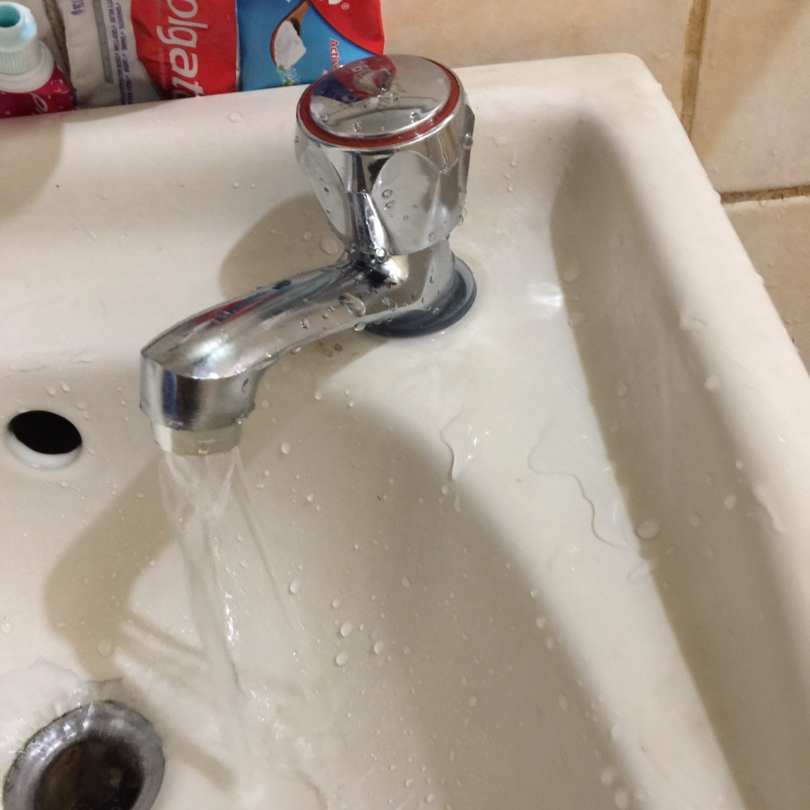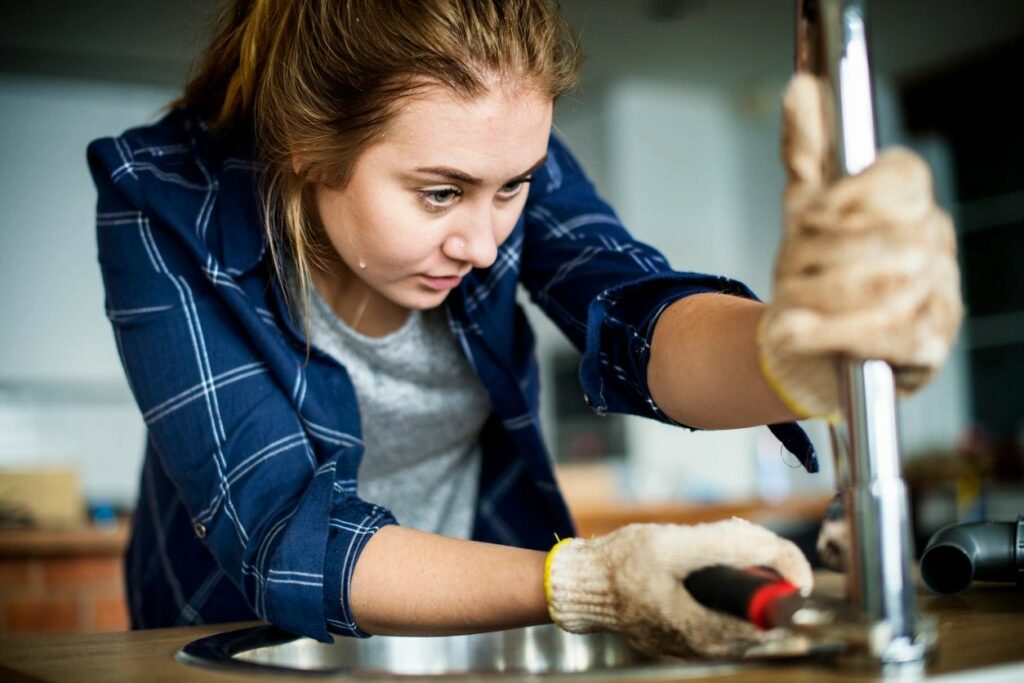We've come across this post on Water Dripping from Faucet: Why and How to Fix directly below on the net and concluded it made good sense to discuss it with you on this page.

Dripping taps might feel like a minor aggravation, but their influence goes beyond simply the annoyance of the noise. From drainage to incurring unneeded financial expenses and wellness risks, neglecting a trickling faucet can result in different effects. In this article, we'll explore why it's vital to resolve this common home problem immediately and properly.
Wastefulness of Water
Environmental Impact
Dripping taps add significantly to water wastage. According to the Environmental Protection Agency (EPA), a solitary faucet trickling at one drip per second can squander more than 3,000 gallons of water annually. This not only pressures water resources but additionally affects ecosystems and wildlife based on them.
Step-by-Step Guide to Repairing a Dripping Tap
Devices Required
Before attempting to repair a dripping tap, gather the essential tools, consisting of an adjustable wrench, screwdrivers, substitute parts (such as washing machines or cartridges), and plumber's tape.
Typical Tap Issues and Their Solutions
Determine the sort of faucet and the certain issue triggering the drip. Usual problems consist of damaged washing machines, rusty shutoff seats, or defective O-rings. Refer to maker guidelines or online tutorials for step-by-step support on fixings.
Financial Costs
Enhanced Water Expenses
Past the environmental impact, leaking faucets can inflate water costs substantially. The collected wastefulness over time converts right into higher utility expenditures, which could have been stayed clear of with prompt repairs.
Potential Building Damages
Additionally, extended dripping can lead to harm to fixtures and surfaces bordering the tap. Water buildup can trigger staining, deterioration, and even architectural problems if left neglected, leading to additional repair service costs.
Wellness Issues
Mold And Mildew and Mildew Development
The continuous presence of wetness from a trickling faucet produces an ideal atmosphere for mold and mildew and mold growth. These fungis not just compromise indoor air top quality but also posture health dangers, especially for people with respiratory system problems or allergic reactions.
Waterborne Diseases
Stagnant water in dripping faucets can become a breeding ground for bacteria and various other microorganisms, boosting the danger of waterborne conditions. Impurities such as Legionella microorganisms grow in stagnant water, potentially resulting in major ailments when ingested or breathed in.
Do it yourself vs. Specialist Fixing
Benefits and drawbacks of DIY Repair Work
While some might attempt to fix a trickling faucet themselves, do it yourself repair services come with their very own set of difficulties. Without proper understanding and devices, DIY efforts can exacerbate the problem or lead to incomplete fixings, prolonging the issue.
Advantages of Hiring an Expert Plumber
Working with a professional plumber makes certain that the underlying cause of the leaking tap is addressed successfully. Plumbing professionals have the expertise and tools to identify and fix faucet concerns successfully, saving time and decreasing the risk of additional damages.
Environmental Responsibility
Private Payment to Conservation
Taking obligation for fixing leaking faucets aligns with broader efforts towards water preservation and ecological sustainability. Every person's actions collectively make a significant impact on maintaining valuable resources.
Sustainable Living Practices
By focusing on punctual fixings and adopting water-saving habits, people contribute to lasting living techniques that profit both present and future generations.
Preventive Measures
Normal Maintenance Tips
To prevent leaking taps, execute routine upkeep such as cleansing aerators, checking for leakages, and replacing damaged parts without delay. Furthermore, think about mounting water-saving tools or updating to more reliable components.
Relevance of Prompt Fixes
Resolving trickling faucets as soon as they're noticed avoids additional water wastage and possible damages, eventually saving both water and cash over time.
Influence On Residential Property Worth
Perception of Well-Maintained Residential Or Commercial Property
Preserving a residential property in good condition, consisting of attending to maintenance concerns like leaking taps, boosts its regarded value and charm amongst possible buyers or renters.
Impact on Resale Value
Properties with properly maintained plumbing fixtures, consisting of taps, command higher resale worths in the real estate market. Addressing dripping taps can contribute to a positive perception during residential property assessments and settlements.
Verdict
Dealing with a trickling faucet exceeds simple ease; it's an essential action towards saving water, decreasing economic expenses, and securing health and wellness and residential property. Whether with DIY fixings or specialist help, taking action to repair dripping taps is a tiny yet impactful way to advertise accountable stewardship of resources and contribute to a much healthier, a lot more lasting future.
How to Fix a Dripping or Leaky Faucet
A leaking faucet is one of the most common problems that homeowners encounter, but it being commonplace doesn’t make it any less annoying. The constant drip drip drip of a leaking bathtub faucet, showerhead, or sink tap can disturb your home’s serenity. Left neglected, a dripping faucet can also result in higher water bills and discoloration or mold growth in your sink or plumbing fixtures.
Fortunately, you don’t have to be a trained plumber to know how to stop a dripping faucet. With some basic tools, replacement parts, and a little patience, leaky faucet repair is a breeze. In this article, we’ll explain what causes dripping faucets and how you can fix them.
What Causes a Leaking Faucet?
Kitchen and bathroom faucets come in all manner of designs, but most involve some combination of valves, O-rings, seals, and washers. The O-ring is usually the weakest link, but any one of these pieces can wear down over time. Heat, moisture, temperature fluctuations, minerals, mold, and movement can contribute to warping and corrosion, breaking the watertight seal. This just comes with the territory of being a homeowner. Everything is always subject to wear and tear, and some component parts of your appliances and fixtures need to be replaced on occasion. At least replacement O-rings are cheap!
More rarely, dripping faucets can be a symptom of excessively high water pressure. Were this the case in your home, you would probably notice that the leak is not isolated to one faucet. Water pressure issues are harder to resolve on your own. We recommend contacting a professional plumber if you suspect your water pressure is too high.
How to Fix a Dripping Faucet
- Pipe wrench or monkey wrench
- Allen wrench set
- Screwdrivers
- Old towel or rag
Shut off the water.
Before you do anything, you need to turn off the water to keep from drenching your kitchen or bathroom. You should find a valve under the sink and against the wall. Once you’ve turned this valve, try turning the faucet on to confirm that the water source has been cut off.
If you can’t locate your local valve for the faucet you’re working on, you can always shut off the water to the house at the main valve. Of course, this will prohibit anyone from using the sinks, showers, or toilets while you’re working on the faucet that’s giving you trouble.
Plug or block the drain.
You’ll be disassembling the faucet and removing some small bits of hardware. Plug the drain with a stopper or rag to avoid the possibility of a small screw falling into your P-trap.
Take apart the faucet assembly.
There are several varieties of kitchen and bathroom faucets, each with its own manner of assembly. For detailed instructions on how to disassemble your faucet, you can refer to the fixture’s manual or contact the manufacturer. If you know whether you have a ball, disc, cartridge, or compression faucet, you can find detailed schematics online.
In general, you need to begin by removing the faucet handles. You might notice a small screw that you’ll need to remove with a screwdriver or Allen wrench. If you don’t see any visible securing hardware, it’s likely hidden under a decorative cap that can be unscrewed or popped off with flathead screwdriver.
Remove each piece methodically, consulting a schematic when necessary. Take notes or arrange the pieces in such a way to make it easier to correctly reassemble the faucet later.
Remove the cartridge.
Once you’ve removed the handles and securing hardware, you should be able to remove the valve cartridge or stem. Some cartridges will slide right out. Other faucet models will require you to loosen a nut with a pipe wrench before you can remove the valve stem.
Examine the exposed hardware.
With the cartridge or stem removed, inspect the component parts. Check the rubber O-rings for wear and tear. Also examine the seat washer for corrosion or other damage. These pieces are usually the responsible parties for a dripping faucet, but it’s worth inspecting the other component parts while you have the faucet disassembled.
Find replacement parts.
Once you’ve identified which faucet component has failed, find an identical replacement. Your local hardware store should have O-rings, seat washers, and other standard components in stock. If you have a luxury or uncommon faucet, you may have to contact the manufacturer for a replacement part.
It’s a good idea to take your old parts with you to the hardware store so you can compare them with the store’s inventory and be sure you’re purchasing the correct replacement.
Reassemble the faucet.
With your new parts in hand, reconstruct the faucet and handles. Don’t be tempted to overtighten screws or nuts. You might think this could create a better seal, but it can instead damage or bend a delicate part of the assembly and create a new problem for you.
Turn on the water and test the faucet.
The only thing left to do is test your work. Unplug the sink, turn the water back on, and try the faucet. Congratulate yourself on a job well done!
https://www.libertyhomeguard.com/how-to-fix-a-dripping-or-leaky-faucet/

I'm very drawn to Water Dripping from Faucet: Why and How to Fix and I really hope you appreciated our piece. If you enjoyed our blog posting kindly remember to pass it around. We take joy in your readership.
Comments on “Understanding the Significance of Fixing a Dripping Faucet”